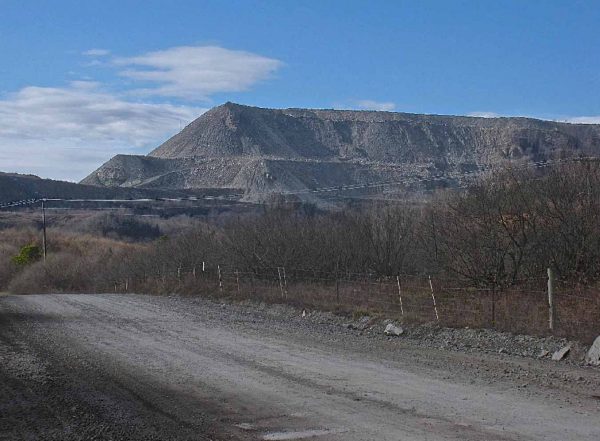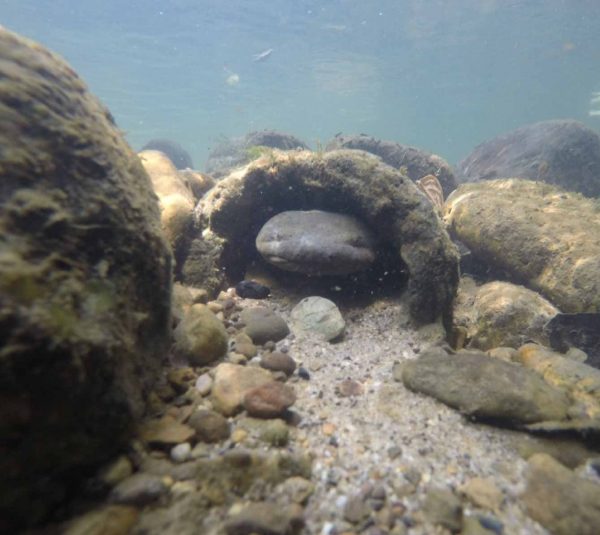
Mountaintop removal mining is a surface mining technique that not only destroys entire plant and animal communities, but also impacts salamander populations in adjacent streams. Photo © Wally Smith.
Salamanders are facing a wide range of threats. Many of them are quite obvious, and others much more subtle.
- The most obvious is the fragmentation and loss of habitat as a result of Virginia’s growing human population. Urban sprawl and roads not only result in the direct loss of habitat, but also fragments the landscape creating small, isolated populations vulnerable to a range of secondary threats.
- The most recent threat to emerge is a new chytrid fungus. Believed to have arrived via the pet trade, Batrachochytrium salamandrivorans (Bsal) has devastated Fire Salamander (Salamandra salamandra) populations in Europe and has conservationists seriously concerned over the possibility of it spreading to the United States. To learn more about this disease visit this link.
- On a global scale, climate change is inarguably the most serious threat to salamanders. Since many of these range-restricted species only occur in very specific high elevation habitats, often referred to as “islands in the sky”, they have nowhere to move in the face of a warming climate. Some models predict that many of these high elevation species will go extinct in the next 100 years, if nothing is done to reverse the effects.
What’s Being Done?

Male hellbender or “den master” guarding the entrance to its nest box. Photo © J.D. Kleopfer.
The Virginia Department of Wildlife Resources (DWR) has been working with several state and regional conservation partners to implement various conservation actions. Some of these actions include the use of artificial nest structures for Eastern Hellbenders that augment nesting habitat and improve population monitoring efficiency; surveys to assess the status and distribution of Green Salamanders; working with private landowners to protect and/or create wetland habitats that benefit a variety of salamander species; and directly acquiring lands for wildlife conservation.
Illegal poaching for the pet trade continues to be a conservation issue for many species of wildlife. You can anonymously report suspicious behavior or wildlife violations to the Wildlife Crime Hotline 1-800-237-5712, or email WildCrime@dwr.virginia.gov.
How You Can Help Conserve Salamanders
- Support efforts to establish and protect natural areas.
- Educate yourself and others about these amazing animals.
- Keep portions of your property in natural conditions by not mowing, grazing, or timbering. You will be amazed by the amount of wildlife it attracts.
- Reduce the use of fertilizers and pesticides in your yard and garden.
- Do not remove rotting logs from your property, because they are an important component of the habitat needs of many salamander species. They use these habitats to forage for insects, as cover from predators, and as nesting sites.
- Do not move stream rocks as it can destroy valuable habitat for a variety of aquatic animals.

Youth conservation initiatives are a great way to raise awareness about salamanders. Photo © J.D. Kleopfer.

